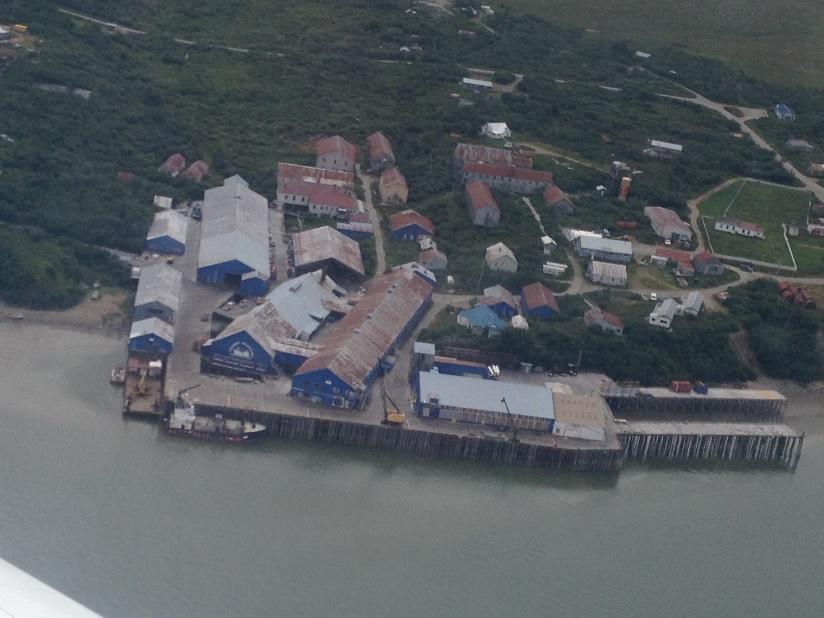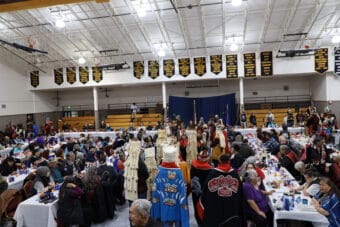
On Tuesday, a state commission that oversees historical place names and registries will consider nominations for the National Register for Historic Places.
Alaska’s longest-running fish plant facility, the Diamond NN Cannery, is among the nominations for the Alaska Historical Commission to consider passing on to the National Register of Historic Places. The South Naknek cannery operated almost continuously from 1895 to 2015.
The Alaska Historical Commission is a nine-member panel that advises the governor on programs concerning history, prehistory, historic sites and buildings and historic names.
Katie Ringsmuth is Alaska’s state historian and deputy state historic preservation officer. She has studied and researched the NN Cannery extensively. And prior to her position with the state, she worked to get the site on the historic places registry.
“There’s 51 buildings still standing … it’s that each building tells a story,” Ringsmuth said. “Those buildings help tell the story of people who oftentimes are omitted or haven’t been included in that history.”
Though largely segregated in the beginning, the cannery eventually became an integrated workforce that consisted of workers of Italian, Scandinavian, Chinese, Filipino, and Alaska Native heritage, among others.
“The fact that these buildings are still standing tells this extraordinary story of people who, you know, whose stories may be lost in the historic record, the written record,” Ringsmuth said. “So that’s why these buildings matter and why it’s so important to care for them. And importantly, to understand, you know, the people whose lives were shaped by them.”
A historic village site in the region is also among the nominations before the commission.
Qinuyang, or Old Igiugig or Kashanak, is a village site in the Bristol Bay region that sits near the confluence of Kvichak River and Slushy Creek. The village site is believed to date back as many as 6,000 years.
In the 1890s, the village was permanently settled as a fishing community. Qinuyang is the Central Yup’ik traditional place name for what is now South Naknek
High Ridge, or the Machetanz Cabin, and the Gould/Morris Thompson Cabin are also among the considerations.
To qualify for the national registry, a site must be at least 50 years old and meet at least one of four criteria:
- Does it reflect an important period in American history?
- Is it associated with a significant person or group?
- Does it have architectural significance?
- Will it yield more information down the road?
The Alaska Historical Commission will also consider changing the name of natural geographical landmarks.
One of those proposals would change the names of two peaks 15 miles southeast of Anchorage. In the 1950s, railroad workers named the mountains Suicide Peaks.
Palmer resident Bill Pagaran is a musician and works in the mental health field and suicide prevention.
“I’m an avid hiker. I, you know, I love to hike. And a few years back, I found out that there’s a couple of mountains just right outside of Anchorage, and I found out that there’s a couple of mountains called Suicide Peak,” said Pagaran, who is Tlingit and Filipino and carries the Lakota name Wakanyan Hentopi Na Wakan Gakonka (Sacred Sound of Thunder) and the Tlingit name is Keeg’an (Strong Warrior).
“I was like, ‘oh, my gosh, how horrible is that? Suicide Peak, really?’” Pagaran said. “I understand that talking about suicide in the right context and in the right way is important. But when you hear the word suicide immediately, you’re thinking death. Maybe you’re thinking of giving up immediately.”
Pagaran says the railroad workers submitted the name to the Alaska Mountaineering Club, which accepted it.
“There was no awareness or honor to the people of the land who were are the caretakers of the land, the first peoples of the land,” he said. “In the renaming process, that’s what I wanted to be done. And so that’s why we came up with the name Yuyanq’ Ch’ex.”
Pagaran worked with tribal leaders and elders to develop the name Yuyanq’ Ch’ex, which is Dena’ina for “heaven’s breath,” and applied for the name change.
Other proposals include naming an unnamed lake in the Matanuska-Susitna Borough to Dalteli Lake.


